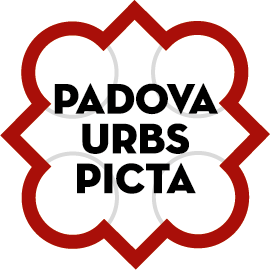From October 2, 2025, to March 31, 2026 the historic center and the outskirts of the city will become the stage for the diffused exhibition The Kiss of Judas – The Return to Plasticity. Meggiato: Tribute to Giotto, curated by Jon Wood and Nicola Galvan, promoted by the City of Padua and organized in collaboration with the Fundación de Arte y Cultura Gianfranco Meggiato. Meggiato’s work interacts with Giotto precisely in the City that has housed the Scrovegni Chapel and the frescoes of the great Florentine master for over seven centuries.
The focal point of the exhibition is the sculpture The Kiss of Judas, inspired by the eponymous scene frescoed by Giotto in the Scrovegni Chapel, one of the absolute masterpieces of medieval art. The work, placed right in front of its entrance, consists of eight black figures and a luminous central figure, representing Christ and towering over all the others in an ascending spiral, inspired by the same tension found in the 14th-century masterpiece. Next to this work, which is the beating heart of the project, Padua hosts another thirteen sculptures scattered among symbolic places and peripheral spaces. From the Carrarese Castle to the Listòn, from Piazza Eremitani to the Gardens of the Roman Arena, down to Piazza Castello and Piazza Azzurri d’Italia, the city transforms into an open-air museum, where art intertwines with historical memory and daily life.
The sculptures, made of bronze using the lost-wax casting technique and aluminum through shell casting, reach imposing dimensions, up to six meters and sixty in height, and stand out on stainless steel bases. Each work is accompanied by a QR code that will allow visitors to deepen its meaning and follow the entire itinerary through their smartphones.
Inauguration
The exhibition will be inaugurated on Thursday, October 2, at 6 PM in front of the Eremitani Museum.
Information
The exhibition locations are: historic center and outskirts of Padua (Carrarese Castle, Listòn, Via San Fermo, Piazza Eremitani, Scrovegni Chapel, Gardens of the Roman Arena, Piazzale Azzurri d’Italia).
